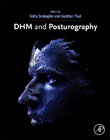
DHM and Posturography explores the body of knowledge and state-of-the-art in digital human modelling, with its application in Ergonomics and Posturography. Digital Human Modelling is the science of representing humans with their physical properties, characteristics and behaviours in computerized, virtual models. These models can be used stand-alone, or integrated with other computerized object design systems, to design or study designs, workplaces or products in their relationship with humans. Digital Human Models serve as fast and cost efficient computer based tools for the assessment of human-system interaction. Posturography is the study of human balance. For even the smallest dislocation, postural movement occurs within a system of forces and moments, balancing the postural equilibrium; or alternatively, lending the body unstable. This equilibrium is continuously removed by internal disturbances, such as respiration or cardiac function; and external interaction with the environment. This book provides an industry first introductory and practitioner focused overview of human simulation tools, with detailed chapters describing elements of posture, postural interactions, and fields of application. Thus DHM tools and a specific scientific/practical problem - the study of posture - are linked in a coherent framework. Eventually the book shows how DHM interface with the most common physical devices for posture analysis, answering to a gap in literature and a common practitioner question. Case studies provide the applied knowledge for practitioners to make informed decisions An introductory up-to-date overview, and introduction to all industrially relevant DHM systems to inform trialing, procurement decisions, and initial applicationUser-level examples and case studies of DHM application in various industrial fields;Clearly structured and Posturography focused compendium, that is easy to access, read and understand INDICE: 1. Introduction 1.1 Introduction 1.2 Why do we need Digital Human Models? 2. Human Motion Simulation tools 2.1 Siemens Jack 2.2 Human Solutions RAMSIS 2.3 SANTOS 2.4 HumanCAD 2.5 ANYBODY 2.6 Dassault Systèmes Virtual Ergonomics 2.7 Woelfel CASIMIR 2.8 The Digital Human Modelling tool IPS IMMA 2.9 ERL 2.10 ESI human models for seat comfort 2.11 Simcenter MADYMO 2.12 ESI VIRTHUMAN models for impact 2.13 alaska/Dynamicus - Human movement in interplay with the environment 3. Open source and internal DHM in posturography 3.1 OpenSim 3.2 On the development of Finite Element human body models intended to capture population and postural differences 4. Elements of posture 4.1 Head Modeling and Applications 4.2 Neck postural stabilization, motion comfort and impact simulation 4.3 Shoulder and arm 4.4 Development of a feasible finite element digital human hand model 4.5 Spine 4.6 Leg 4.7 Foot 4.8 Pelvic floor biomechanical assessment: current approaches and new evidences 5. Postural interactions 5.1 Posture and Anthropometry 5.2 Postural stability 5.3 Posture measurements 5.4 Activities of daily living (ADL) 5.5 Posture prediction and physics based human motion simulation 5.6 3D body shape modelling and posturography 5.7 Adaptable DHMs from 3D body scans 5.8 Comfort 5.9 Models of the human in dynamic environments 6. Cognition and control in posturography 6.1 Reliability Engineering Methods in Human-in-the-Loop Problems: Non-Deterministic Approach 6.2 Personilized neuromusculoskeletal modelling 7. Fields of applications 7.1 Task Analysis: Ergonomically designed socio-technical work processes or human machine interfaces using digital ergonomic tools and methods 7.2 Rehabilitation 7.3 Aviation 7.4 Ergonomic design and assessment of diagnostic ultrasound system through DHM 7.5 Industrial applications of EMA in Product Design and Production Planning 7.6 The Virtual Physiological Human: data and models of human musculoskeletal mechanics 7.7 Use of Digital Human Modeling in Product Design 7.8 Clothing 7.9 Human Modeling Tools for spacesuit and hardware design and assessment 7.10 Modeling of human cognitive behavior for system design 7.11 Individualization of Digital Human Models for planning of Human Robot Collaboration 7.12 Anthropometric Modeling in Forensics 8. DHM protocols 8.1 Standards and Norms 8.2 DHM and data exchange protocols 8.3 Methods in seat comfort 9. Integrations 9.1 Motion Analysis of work conditions using commercial depth cameras in real industrial conditions 9.2 Design smart clothing into DHM 9.3 Integration with commercial 3D scanning instrumentation 9.4 Integration with commercial eye tracking devices 9.5 Integration of commercial pressure measurement technologies 9.6 Haptic device integration 10. Case studies 10.1 Application of 3D scanning in design education 10.2 Three-dimensional scanning of the torso and breasts to inform better bra design 10.3 Building patternmaking theory to better represent the female form 10.4 Digital Human Modeling in collaborative robotics 10.5 Designing aircraft seats to fit the human body contour 10.6 Use of wearable technology for movement analysis in parkour 10.7 Predicting Vehicle Occupant Postures using Statistical Models 10.8 Surgical modelling/brain interfaces/augumented mechanosensory feedback
- ISBN: 978-0-12-816713-7
- Editorial: Academic Press
- Encuadernacion: Cartoné
- Páginas: 950
- Fecha Publicación: 01/09/2019
- Nº Volúmenes: 1
- Idioma: Inglés
